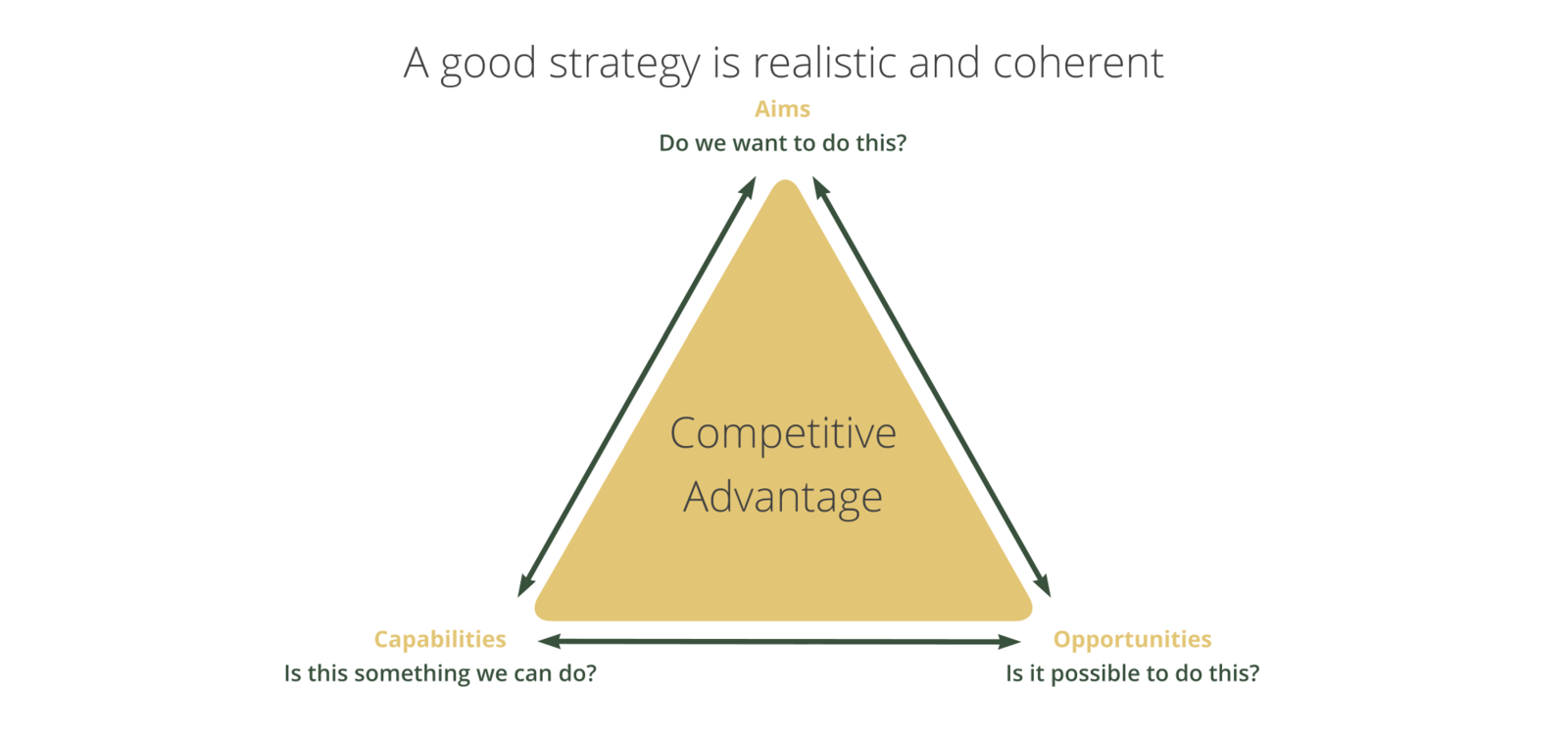Developing Strategy: Some Propositions
“
What has not been made simple cannot be made clear and what is not clear will not get done’
”
1. Strategic thinking involves setting the most ambitious aim possible given the opportunities offered by the external environment and the internal capabilities of the organisation.
2. The relationship between ends and means is reciprocal - they co-determine each other.
3. Neither capabilities nor opportunities are fixed. Capabilities can be developed and opportunities evolve. But the strategist must make a tough, realistic assessment of both.
4. The aim should be ambitious, but must also be realistic. Stretch can easily turn into fantasy. Some of the worst strategic disasters in history have been due to the hubris of leaders who set unrealistic goals.
5. The development of strategy can start at any point on the triangle, but it must end by going through all three. A test of a strategy is how strongly aims, opportunities and capabilities reinforce each other. A good strategy is coherent.
6. A good strategy shifts the odds by defining competitive advantage. True competitive advantage is hard to imitate and therefore often difficult to achieve. Every situation is a one-off, every competitive advantage is unique.
7. Running operations is about solving problems. Developing strategy is about making choices. A good strategy should make it clear what it is not trying to achieve.
8. Running operations is about eliminating weaknesses. Strategy is about building on strengths.
9. Operations can be benchmarked and improved by adopting best practice. Strategy tries to increase differences and seeks uniqueness.
10. Good operators take action quickly to react to current events. Good strategists think incisively to proactively shape future events.

